Give your lungs the gift of fresh air with the Most Effective CO2 Absorbing Houseplants Proven by Science!
Did you know that in most cases, indoor air is more polluted than the one outside? We have compiled the 11 most effective CO2-absorbing houseplants proven by science to combat this silent but deadly issue.
So, along with botanical allure, you also have a practical use of the plants that will help you in the long run. Read on to know more!
Most Effective CO2 Absorbing Houseplants Proven by Science
1. Bird’s Nest Fern
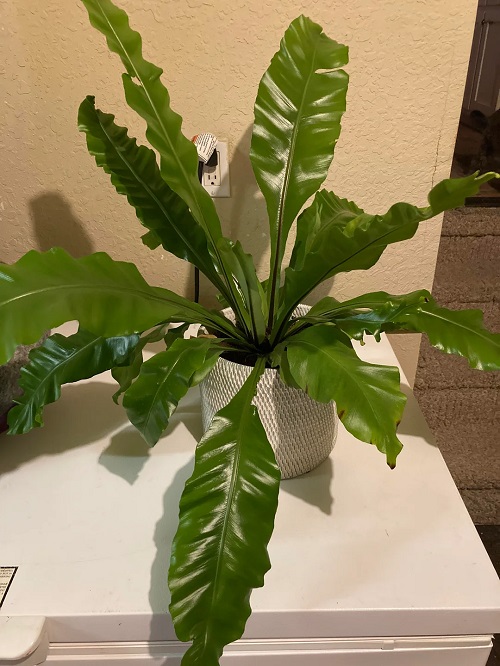
Botanical Name: Asplenium nidus
The Bird’s Nest fern might have a funny name, but when it comes to reducing the CO2 footprint indoors, this plant stands on business!
It can reduce the concentration of CO2 from 2000 ppm to a safe 800 ppm at an average of 1.984 ppm·h−1 (per pot). The plant is also quite effective in reducing the levels of HCHO from 2 ppm to the safe level of 0.1 ppm, at an average of 0.003 ppm·h−1 (per pot). However, don’t forget that these results came from observation in a closed chamber.
Growing Tip: This banana-leafed fern needs adequate humidity. Make sure the room temperatures around it do not drop below 40 F (4.5 C) and mist it regularly. Here’s how to care for it properly.
2. Snake Plant

Botanical Name: Sansevieria trifasciata
Next on our list is one of the most common houseplants, the Snake plant! Did you know this sword-leafed succulent is actually an excellent air purifier and absorbs CO2 in the night?
According to this study done at Naresuan University, Thailand, snake plants can absorb CO2 at 0.49 ppm/m3 in closed chambers, making them quite effective in curbing down the CO2 levels from indoor air if grown in a group.
Growing Tip: This tropical perennial can work its magic even in the darkest of rooms, as it can survive on very low light for extended periods! Just avoid these spots.
3. Succulents and Cacti
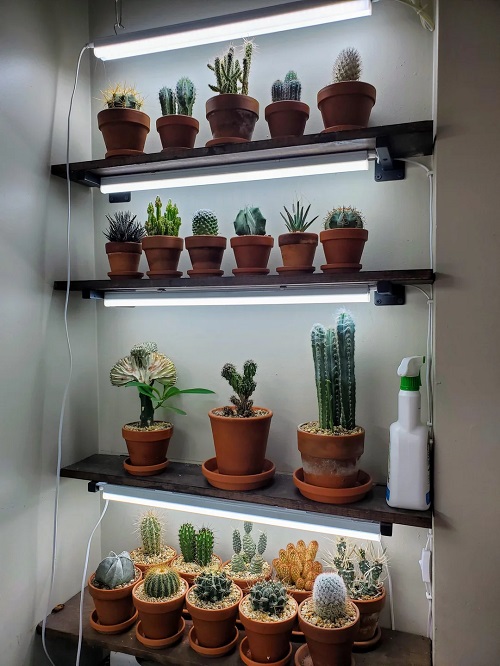
Cactus and succulents are proficient in removing airborne bacteria and also absorb CO2 at night while releasing oxygen. They lose less water by opening stomata during the nighttime. How cool is that?!
Growing Tip: They are the best option for busy gardeners who often can’t tend to their plants, as these require little to no attention and can survive even in the worst conditions! You can start with these succulents for beginners.
4. Prayer Plant

Botanical Name: Maranta leuconeura
The Prayer plant is the answer to all your prayers for fresh air! According to this study, it can absorb 71.67 ppm CO2 in a closed room when tested at 300 or 700 lux of light intensity.
It is also a spectacle to behold, as its leaves have variegated patterns and margins that fold at night and resemble folded hands–hence the name.
Growing Tip: The plant performs better in bright indirect or filtered light, exponentially decreasing the CO2 levels indoors when grown with other plants.
Just keep in mind that the prayer plant requires more humidity than other low-maintenance plants, so use a humidifier when indoor air is dry. You can also use this pebble tray hack.
5. Dieffenbachia
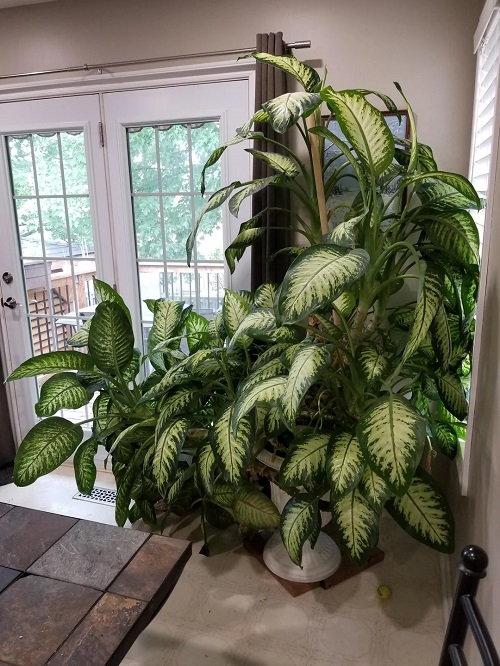
Botanical Name: Dieffenbachia
When it comes to absorbing carbon dioxide, Dieffenbachia does this efficiently by reducing it to 23.90 percent in a closed chamber. According to a Malaysian study, the initial CO2 was 436 ppm, which was reduced to 332 ppm after the final reading.
Growing Tip: To grow it, you will need rich, fertile soil and a room with moderate temperature and humidity. Do make sure it stays out of the reach of children and pets, as ingesting it can numb vocal cords.
6. ZZ Plant

Botanical Name: Zamioculcas zamiifolia
The ZZ plant is perfect for adding beauty with almost no hassle, as it is versatile and adaptable in nature and requires low maintenance.
According to the NASA Clean Air Study, the ZZ plant can efficiently clean indoor air by absorbing harmful pollutants like carbon dioxide, xylene, and toluene from the surroundings.
Growing Tip: You will have to pay special attention to its pot as it does not like wet feet and needs holes at the bottom of the container for proper seepage of excess water. Grow it once, and it’ll give you these benefits for decades.
7. Pothos
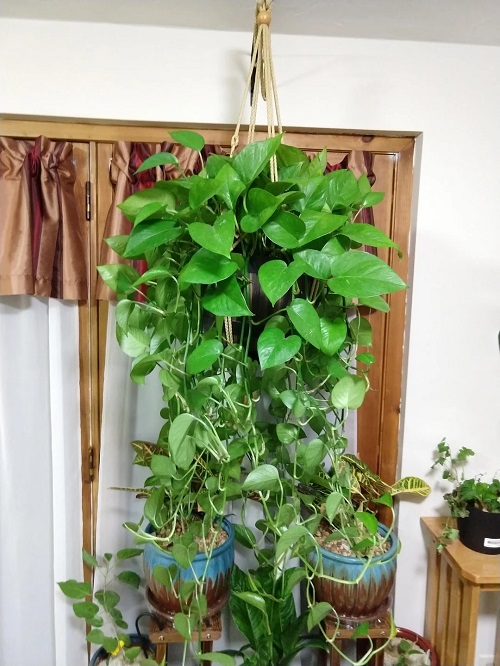
Botanical Name: Epipremnum aureum
The Pothos plant needs no introduction due to its iconic vine-like structure, but did you know that it is a master air purifier as well?
In this research on three houseplants – pothos, spider plant, and snake plant- it was summarized that these plants could absorb ozone, a common air pollutant, and carbon dioxide.
Growing Tip: The pothos is a dream plant for novice gardeners and incredibly versatile. You can use these simple tricks to grow your own effortlessly!
8. Anthurium
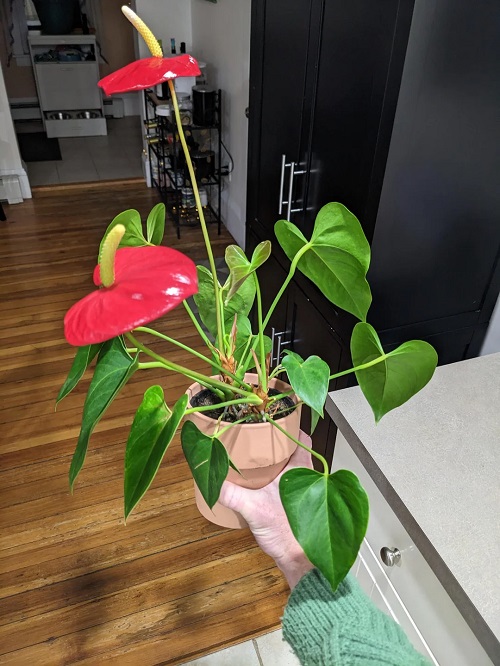
Botanical Name: Anthurium andraeanum
As per this Malaysian study published in the Asian Research Publishing Network Journal in September 2016, Anthurium can absorb 21.20 percent of CO2 from the air, which can significantly improve human health over a long period of time. Initial CO2 was 467 ppm, and the final reading was 368 ppm.
Growing Tip: Anthuriums need bright but indirect sunlight, moist yet well-drained soil, and air humidity levels over 60%. You can grow a lush and big specimen using these tips!
9. Rubber Plant

Botanical Name: Ficus elastica
The Rubber plant can grow to a colossal height of 100 feet in the wild, but indoors, it is known for something other than its size – its ability to reduce CO2 levels!
According to NASA’s Clean Air Study, it can remove carbon dioxide and carbon monoxide from the surroundings. Apart from that, it also makes the air more breathable by filtering formaldehyde and VOCs.
Growing Tip: The plant is prone to shock if constantly moved, so choose a spot away from cold drafts and try not to relocate it much if you don’t want it to lose its shiny foliage.
10. Jade Plant

Botanical Name: Crassula ovata
The Jade plant is a sub-tropical succulent that offers many benefits and is a CAM plant that utilizes crassulacean acid metabolism (CAM) to fix carbon dioxide at night and improve the air quality.
The jade plant is also known for performing photosynthesis during the day through the Calvin cycle, which converts carbon dioxide from the air into glucose to provide energy to the plant.
Growing Tip: Jade plants are prone to overwatering, so you’ll need to check the soil’s moisture level before watering. You can use a wooden dowel to test it. If the dowel comes out dry, it’s time to water.
11. Arrowhead Plant
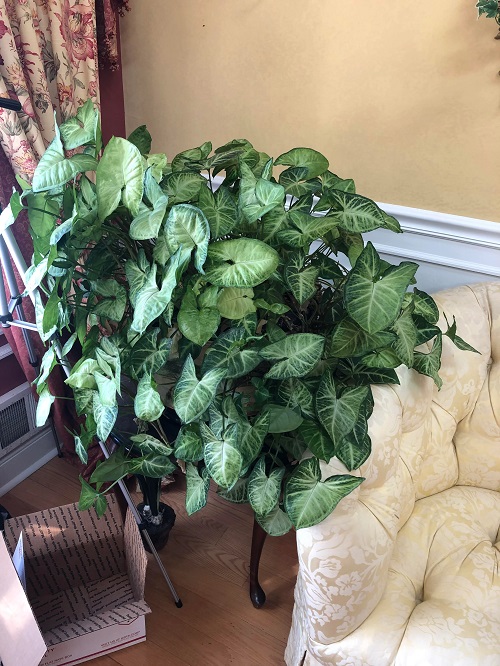
Botanical Name: Syngonium podophyllum
Need a plant that reduces the CO2 levels in the air and can do well both as a shrub and a vine? The Arrowhead plant is the one for you!
In a study done at the University of Tun Hussein Onn Malaysia, the initial CO2 for the Arrowhead Plant was 433 ppm, and the final reading was 333 ppm, indicating that the plant absorbed 23.10 percent CO2 overall in a closed test room.
Growing Tip: Young arrowhead plants have a stiffer, shrubby look, but as they mature, they develop vine-like growing habits. Just make sure they are not exposed to direct sunlight, as it will bleach or burn their ornamental leaves.
As you scroll down till the end, it’s important to point out that plants don’t work like air purifying devices, you can’t expect just one plant to reduce VOCs of your indoor air, but having a few of them can definitely make a difference.


